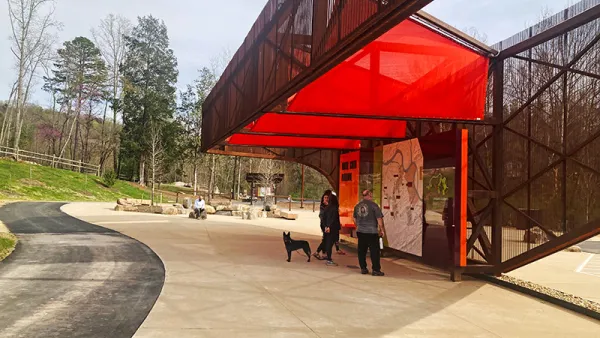Cities are full of ants, mice, rats, and other animals that scavenge on the trash of human beings. A new report from North Carolina State University analyzes how biodiversity influences the productivity of these creatures.
A new study by Elsa Youngsteadt and colleagues at the North Carolina State University published in Global Change Biology analyzes the role of biodiversity in ant species scavenging habits. In particular, the team asked, how much do ants on Broadway and West, mostly a variety known as pavement ant (Tetramorium Species 5), scarf down compared to the much more diverse ants residing in Central Park and 13 other parks in Manhattan?
As Nathan Collis writes on Pacific Standard, by littering in very controlled settings, the team found that ants, insects, and other animals actually ate more waste in the low-diversity median strips than in the parks. The scientists expected, "that the more diverse arthropod assemblages in parks should consume more food waste. Although we confirmed that park sites supported more ant species and more hexapod families than did median sites, park arthropods ate 2-3 times less food than those in medians," as the report stated.
Overall, the scientists research showed "the importance of species identity and habitat characteristics, rather than diversity, as predictors of food removal," an important lesson for municipalities looking to use more natural decomposters in their food waste systems.
FULL STORY: Biodiversity Isn’t Everything in Urban Environments

Maui's Vacation Rental Debate Turns Ugly
Verbal attacks, misinformation campaigns and fistfights plague a high-stakes debate to convert thousands of vacation rentals into long-term housing.

Planetizen Federal Action Tracker
A weekly monitor of how Trump’s orders and actions are impacting planners and planning in America.

Chicago’s Ghost Rails
Just beneath the surface of the modern city lie the remnants of its expansive early 20th-century streetcar system.

Bend, Oregon Zoning Reforms Prioritize Small-Scale Housing
The city altered its zoning code to allow multi-family housing and eliminated parking mandates citywide.

Amtrak Cutting Jobs, Funding to High-Speed Rail
The agency plans to cut 10 percent of its workforce and has confirmed it will not fund new high-speed rail projects.

LA Denies Basic Services to Unhoused Residents
The city has repeatedly failed to respond to requests for trash pickup at encampment sites, and eliminated a program that provided mobile showers and toilets.
Urban Design for Planners 1: Software Tools
This six-course series explores essential urban design concepts using open source software and equips planners with the tools they need to participate fully in the urban design process.
Planning for Universal Design
Learn the tools for implementing Universal Design in planning regulations.
planning NEXT
Appalachian Highlands Housing Partners
Mpact (founded as Rail~Volution)
City of Camden Redevelopment Agency
City of Astoria
City of Portland
City of Laramie





























